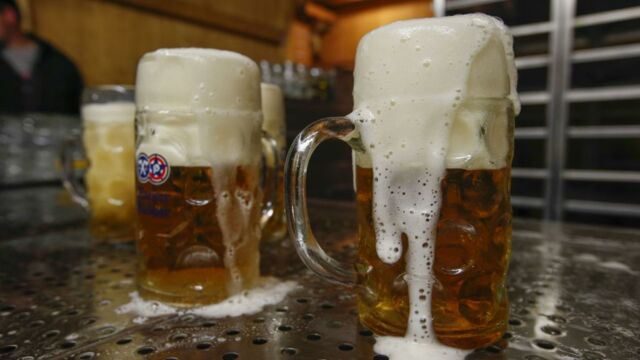Why do bartenders wet the glass before serving the beer?

Rinsing the glass... A crucial step in the codified ritual that dictates the serving of beer. Is it a bartender's trick? Or is it actually useful?
On these warm June afternoons, there is nothing like going to the bar after work to sip a nice cold beer. With pubs reopened, time to besiege the ale taps. Blonde, brown or white, it matters little, so long as the foam sings the sweet song of intoxication.
Discover our latest podcast
But when it's time to serve a tall one, the barman may make an intriguing move: he wets the glass... Could it be to lure the customer by diluting the precious elixir with a little water? Impossible, waiter etiquette forbids him from doing so. Would he then try to make up for it discreetly, after having omitted to wash the previous customer's glass?
More under this adMore under this adFar from him the wish to besmirch your tastebuds, no, the barman is a conscientious professional. So diligent he is, that he rinses the glass before serving the beer with one aim in mind: to create a frothy foam that is close to perfection.
Small motes, big doubts
The quality of the bubble layer that forms on the surface of beer glasses depends on how said glass has been prepared. No matter how clean the surface of the glass is, there are always microscopic particles of dust or minerals left behind by the evaporation of the wash water.
More under this adMore under this adHowever as tiny these debris are, they are very much a problem for the fresh beer. They are free-floating objects around which the gas dissolved in the beer can form a bubble. This phenomenon is known as 'nucleation' and, if allowed to happen, causes an uncontrolled release of gas, resulting in a flat, insipid glass of hop juice...
While the foam plays a key role in beer, bringing aromas to your nose before you actually taste the beer, too much foam quickly becomes unpleasant. Hence the importance of rinsing the glass! This also cools the glass, which can otherwise heat up your beer, spoiling some of the pleasure.
More under this adMore under this adScientists also enjoy a little foam
As banal as they may seem, the bubbles in beer, as well as in all other effervescent drinks, remained relatively mysterious until the early 2000s.
But then French scientist Gérard Liger-Belair came around. He had been working for a good fifteen years to 'develop tools likely to better understand the role of this bubble, which has been unexplored for too long.' A mission that he set to accomplish with his team 'Effervescence, Champagne and Applications'.
More under this adMore under this adThis scientist, who is something of an artiste, shot bottles and flutes of champagne. One of his objectives was to determine with precision the optimal conditions for the formation of bubbles: temperature of the drink, viscosity, or even the shape of the glass. All keys to bringing out all the flavours of the beverage.
Serving beer: a learned art mastered only by the elite bartenders. A rare skill that gives these bubble experts something to brag about!
More under this ad